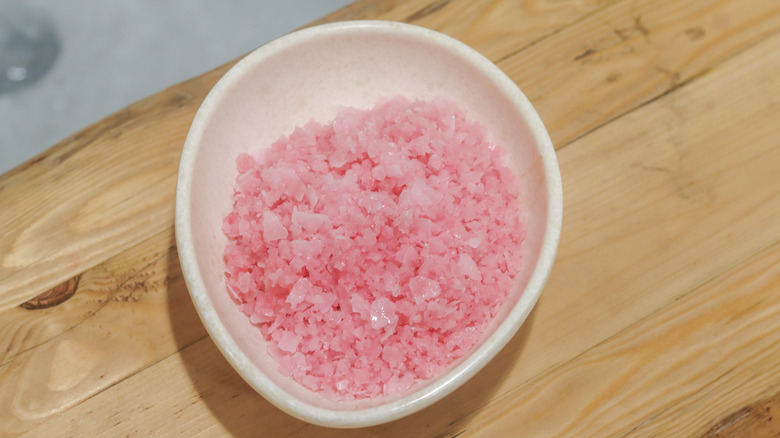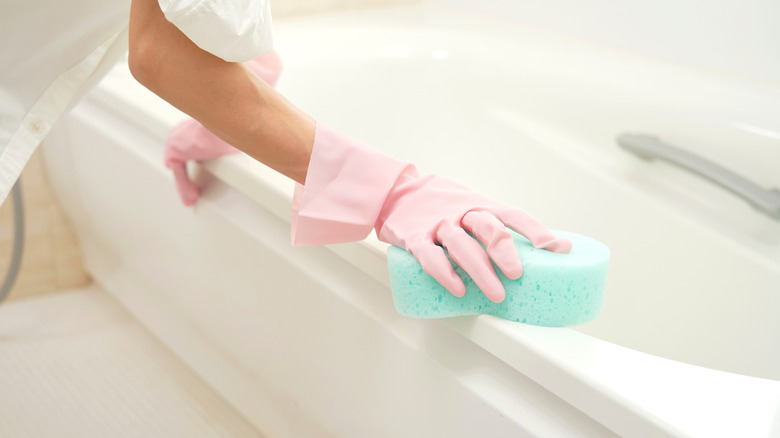Here's How To Remove Tough Epsom Salt Stains From Your Acrylic Bathtub
There's nothing like soaking in a warm bath after a long, hard day. Adding perfumes, oils, or salts might seem like a natural way to enhance this experience, but these extras can sometimes lead to unintended consequences. Epsom salt, a type of mineral salt, is a popular choice, thought to help with easing muscle aches and pains due to its naturally occurring magnesium content. While it may aid in relaxation and muscle recovery, regular use can result in a buildup of residue on acrylic bathtubs. Some Epsom salts may also feature additives such as soaps, perfume, and dyes. These, especially those containing dyes, can lead to hard-to-remove discoloration.
If your acrylic tub has been affected by (undyed) salt residue buildup, you can remove it with a mixture of vinegar and water. First, fill your acrylic tub with warm water to loosen any residue. After a quick soak, drain the water and add a 1:1 mixture of white distilled vinegar and water to a spray bottle. Spray the vinegar mixture on the affected areas and allow it to sit for 15 minutes to break down the mineral deposits. Then, wipe it clean with a dampened sponge or soft cloth and rinse. All of this is simple enough; however, tubs stained by added dyes in Epsom salt will require a more vigorous cleaning, which involves applying a baking soda and hydrogen peroxide paste to the affected areas.
How to use hydrogen peroxide and baking soda to remove Epsom salt stains
Much like bath bombs, some Epsom salts contain perfumes and dyes. If you've used one of these products and are now left with a ring around your bathtub, a mixture of baking soda and peroxide may offer some relief. Baking soda acts as a gentle abrasive while hydrogen peroxide works to lift the stains. When mixed, they create an easy-to-apply paste.
In a small bowl, add one part hydrogen peroxide to two parts baking soda until a paste forms. Apply the paste to the stains using a sponge and allow it to sit. After one hour, gently rub the mixture into the affected area using a sponge, soft cloth, or soft-bristled scrub brush. (Avoid using any abrasive materials such as scour pads, hard-bristled brushes, or more Epsom salt to clean your acrylic tub, which can leave large scratches.) Rinse the area with clean water. If some stains remain, repeat the process.
If the baking soda and hydrogen peroxide mixture fails to work, consult your tub manufacturer for recommendations on commercial-grade bathroom cleaners. Also, remember to avoid using bleach, as it can damage the acrylic finish on your tub, possibly causing further discoloration.

